ASRock's High-End Vision 3D HTPC Reviewed
by Ganesh T S on October 3, 2010 10:20 AM EST
The Vision 3D is primarily built out of notebook components, and it is not possible for the average enthusiast to build such a system with off-the-shelf components. Of course, one might go in for a Clarkdale based HTPC with a GF104 discrete GPU solution for similar features right now. The rumoured GF108 based GT430 might even be a good GPU for a mini-ITX build. However, plug and play units like the Vision 3D (or the Dell Zino HD, for that matter) expand the appeal of HTPCs beyond the usual DIY consumers. In the rest of this section, we will analyze the components of the Vision 3D system in detail.
Motherboard & Chipset : mini-ITX Mobile Intel H55 Express - MXM
The motherboard used in the Vision 3D is very similar to the Core 100, except for the following points:
- An additional USB 3.0 port is enabled by the FL1000 chip from Fresco Logic.
- The VIA 2020 audio codec has been replaced by the ALC890 from Realtek, while retaining THX certification for the unit
- The GT425M MXM module is connected directly to the PCI-E x16 ports of the CPU
We had estimated the price of the motherboard and chipset to be around $140 for the Core 100. For the Vision 3D, the thermal design is substantially different (more on this in the next section), and the Fresco Logic chip is extra too. For the purpose of cost analysis, let us assume that a similar motherboard can be purchased for around $160.
CPU : Intel Core i3-370M @ 2.40 GHz
For the form factor and thermal design of the Core 100 HT-BD, only processors with a maximum TDP of 35W are supported. Also, most HTPCs do not require features like Turbo Boost, particularly when their performance exceeds what people have come to expect out of a particular form factor (talking about the Atom nettops) by a magnitude. Keeping in mind the cost of the processors and the nett cost of the system, ASRock has decided to go with the latest processor in the lowest end of the Arrandale spectrum, namely, the Core i3-370M. We feel that this is a very good choice, as the processor is powerful enought for most of today's demanding tasks, particularly from a HTPC perspective.
The Core i3-370M was released in Q3 2010, as an intermediate part between the introduction of the original Arrandale processors and the Sandy Bridge lineup next year. The only difference between the original Arrandale i3s and the new version is an unlocked multiplier. The i3-330M and i3-350M introduced in Q1 had maximum bus to core frequency ratios of 16 and 17 only. The i3-370M increases this to 18. The DMI link in the former chips are capable of 2.5 GTps, while the i3-370M's DMI link is capable of 4.8 GTps. The cache sizes are the same across the board, but the i3-370M has the highest default clock frequency of 2.4 GHz among the i3 mobile processors.
The (un)fortunate aspect of the Arrandale processor in the Vision 3D is the fact that the integrated GPU is completely disabled. There is no 'Optimus' support in this system. ASRock's official stance is that this was done because the HDMI outputs of the Intel IGP and the GT425M are unable to support seamless transition. Further, the Arrandale IGP is yet to support 3D, and it would go against the very essence of introducing the Vision 3D, if it were to be supported.
For the purpose of cost analysis, let us assume that the processor can be purchased for around $120. The exact price is unknown since it is available only to OEMs.
GPU : nVidia GeForce GT425M
The unique capabilities of the Vision 3D are due to the nVidia GeForce GT425M MXM card attached to the processor. Based on the GF108 Fermi architecture, this mobile GPU enables a host of features in the Vision 3D such as DirectX 11, 3D Blu-Ray (MVC decode) playback acceleration, 3D Vision, HDMI 1.4a, HD audio bitstreaming and PhysX support. In the default configuration, the 96 CUDA cores are clocked with a graphics clock of 560 MHz and processor clock of 1120 MHz. The 128-bit DDR3 interface is clocked at 800 MHz, giving an effective memory bandwidth of 25.6 GBps. The MXM card in the Vision 3D comes with 1 GB of Hynix DDR3 SDRAM exclusively for use by the 425M.
One of the most difficult things to estimate is the true cost of these MXM modules. While common sense indicates that the cost of this must not be more than $100 or so (a discrete GPU of much higher performance can be obtained for that cost), online searches revealed only one direct-to-consumer seller for these type of cards. MXM-Upgrade charges 250 Euros for a GTS 250M with 1 GB DDR3. We have no option but to estimate the price of the 425M MXM card at around $300, though we are fairly confident that the actual cost to ASRock is much much lower.
DRAM : Kingston's 2 x 2 GB DDR3 SO-DIMM @ 1066 MHz
The DRAM configuration is similar to that of the Core 100. There is support for upto 8 GB of DRAM, but the Vision 3D ships with 4 GB, which is more than enough for HTPC purposes.
The memory can be purchased for around $100 online.
Hard Disk : Western Digital Scorpio Black 500GB 7200 rpm 2.5"
Unlike the Core 100 which shipped with a 5400 rpm drive, ASRock has decided to ship a faster 7200 rpm drive with their high end Vision 3D. This is bound to give the Vision 3D better OS boot times and also improved general performance. The Western Digital Scorpio Black 2.5" hard drive series is one of the well reviewed lineups in the industry, with desktop class performance and power requirements similar to the 5400 rpm drives. Unfortunately, this lineup doesn't have a 640 GB version yet. ASRock has decided to go with the maximum available capacity in this series, 500 GB. We can't fault ASRock for trying to strike the best possible balance between performance and hard drive capacity.
The Core 100 could accommodate a second 2.5" SSD or hard drive. Unfortunately, the space constraints seem to nullify that possibility in the Vision 3D. ASRock does supply SATA data and power cables, but it is unlikely that anyone would attempt to sandwich a drive between the ODD and the supplied HDD.
The 500 GB Scorpio Black is currently available for around $70.
Optical Disk Drive : Philips / Lite-On Blu-Ray / DVD RW Slot Loading Drive
The Vision 3D model ships with the Lite-On DL-4ETS Blu-Ray / DVD RW slot loading drive. Not much information can be found about this model online. However, similar new slot loading Blu-Ray drives meant for notebooks can be found on eBay for around $150. The tray loading drive in the Core 100 was one with which we weren't completely happy, and thankfully, ASRock has fixed this for us in the Vision 3D.
Miscellaneous Components
The chassis is obviously custom made for this motherboard. ASRock also throws in the SATA, power cables and screws for the optional 2nd hard drive (which users would find difficult to install), as well as a DVI-VGA adapter. Mini-ITX cases with PSUs of much higher rating (the unit comes with an external 90W adapter) can be had for around US $50. So, we estimate the cost of the chassis, power adapter and other similar accessories to be around the same. Note that the unit also ships with an IR based MCE remote. The build quality of the MCE remote bundled with the Vision 3D is much higher than the one which shipped with the Core 100. The batteries are also of the CR232 model, which should give them a much longer lifespan. The remote is also much nicer to look at.
We estimate that the MCE remote and the IR receiver add around $40 to the cost of the Vision 3D.
Cost Analysis
| Vision 3D Pricing Analysis | ||||
| Component | Average Price Online | |||
| Motherboard (with mini-PCIe wireless) | $160 | |||
| CPU | $120 | |||
| GPU MXM Module | $300 | |||
| DRAM | $100 | |||
| HDD | $70 | |||
| Optical Drive | $150 | |||
| MCE Remote & IR Receiver | $40 | |||
| Misc Components (Chassis, Power Adapter, Cables, etc...) | $50 | |||
| Total Cost to Build | $990 | |||
| ASRock Vision 3D Estimated Cost | $999 | |||
This HTPC is supposed to go on sale soon around the $999. The DVD drive version is supposed to cost around $899. As soon as we prepared the above cost analysis, we realized that ASRock makes its margin fully on the MXM module. Since this is a component whose cost can't be estimated without being a business insider, we have to conclude that the Vision 3D is not a bad investment from the value viewpoint. Do note that the cost of the OS and keyboard / mouse have to be added on to this to get a sense of the true cost of the system.
The competition for the Vision 3D would come in the form of high end notebooks such as the Asus N73JQ. They cost a good $400 or so more, but come with the OS, screen and keyboard. While $999 appears quite high for this HTPC, cost analysis reveals that it is not such a bad deal. Of course, we were shocked at the price tag when we got to know about it. We would still like the price to be lower, but the fact is that it is not entirely unreasonable.
Update: ASRock pointed out that we haven't included the cost of the OEM version of Cyberlink PowerDVD and the 3DTV Play software. It looks like the MXM card is much cheaper than we estimated, considering that our estimated cost with these new additions is much more than the price suggested by ASRock.


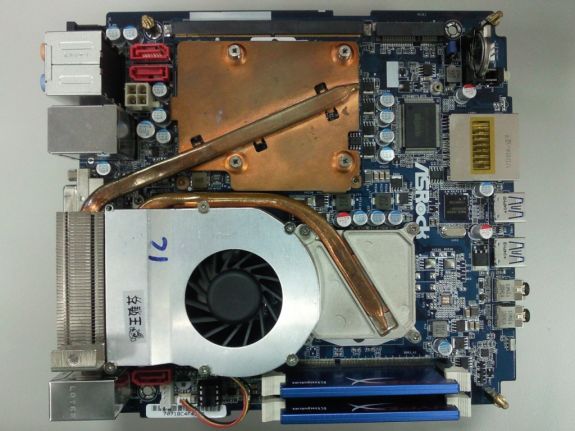
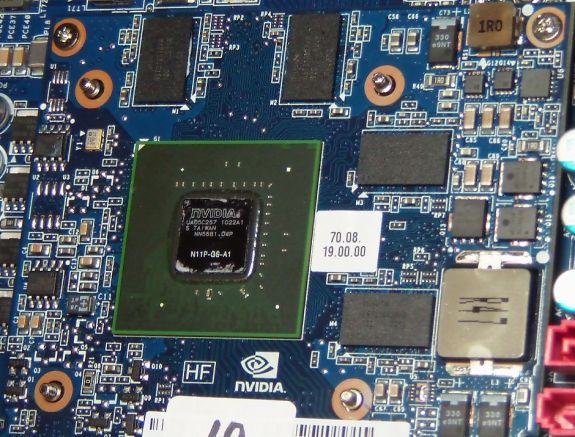
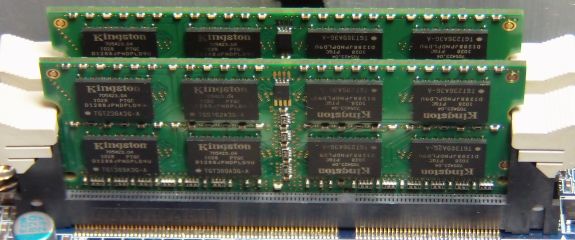
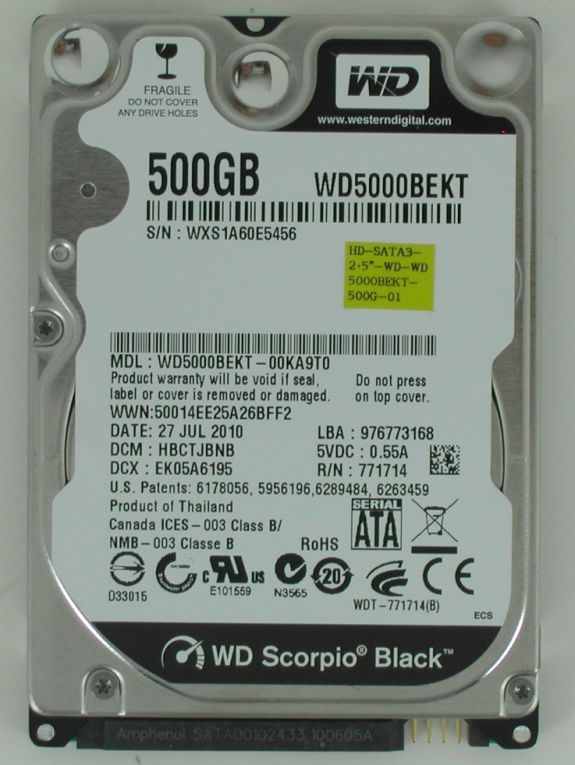

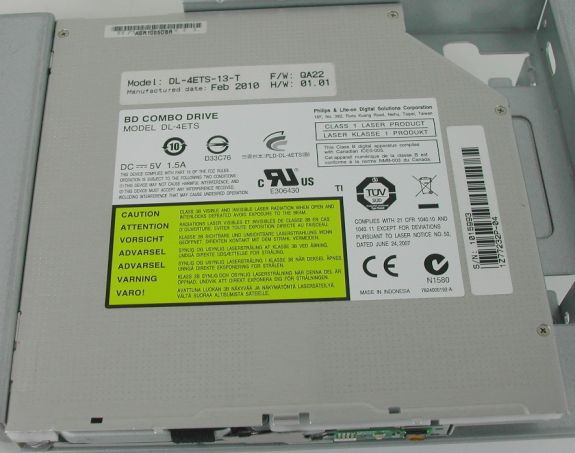
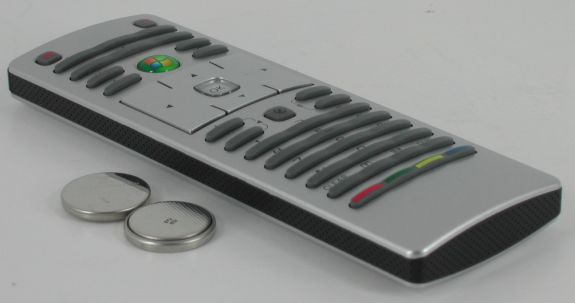








51 Comments
View All Comments
ganeshts - Sunday, October 3, 2010 - link
Thanks, fixed :)nitrousoxide - Sunday, October 3, 2010 - link
A Seagate Barracuda Momentus XT 500GB would do much better job than WD Scorpio Black.LtGoonRush - Sunday, October 3, 2010 - link
A Seagate Momentus XT 500GB would cost nearly twice as much as the WD Scorpio Black 500GB ($130 vs $75 at retail), and the performance difference is rather unimpressive. In the tests where the Seagate can make use of its SLC cache it can take the lead, but in most tests the Scorpio Black is faster, especially when seek times or write performance come into play, since those are Seagate's major weaknesses.BansheeX - Sunday, October 3, 2010 - link
Cool box but LOL at the THX logo being slapped on it. They used to put that on heavily compressed DVD mixes, not all of them good either. Consumers don't care anymore.ganeshts - Sunday, October 3, 2010 - link
Personally, I don't care too much about the THX either :) If you are using HDMI for audio, it doesn't even appear in the picture.The internal audio codec is advertised with THX, so the HTPC using it gets the additional marketing point too :)
tobrien - Sunday, October 3, 2010 - link
you guys did such an excellent job with this review! thanks for all the hard work and effort you guys put in!Shiitaki - Sunday, October 3, 2010 - link
I'm not seeing the value here. A thousand dollars to stream content, and play blurays? One of the previous replies you stated that there was no native bluray support for the mac mini, true. And there is for a machine running windows? Tacking on Cyberlink is not native support.That is way too much hardware for what it does, which illustrates how badly Windows is for a platform. You could do much better with less hardware. Which is the real problem with a htpc, the software, the operating system, and various codecs, and getting it to all work together. Too much complexity. Most of the processor is wasted on layers of software instead of doing actual work. Most of the effort is expended to compensate for lazy and inadequate programming, as well as DRM.
I understand the concept, I had a htpc for a couple of years, but after the frustration of trying to get surround sound to work in Cyberlink for Blurays, and the tech support to keep Windows working, I gave up. In fact it was specifically windows deciding to rebuild my music library from scratch every time I opened media center to play music. I want an appliance on the other end of the remote, having to search forums and break out a mouse and keyboard to trouble shoot something that worked the day before just fine should not be step two after pressing the power button.
In the the article, there is no details as to how much or little work it took to make the software environment to work. Did settings hold, did you have to do reconfigurations, update drivers, load codecs? I seriously doubt it worked out of the box. Working out of the box is the great failure of the pc industry. On the video quality you are hedging, saying that video quality will get better with driver updates? So it's not finished eh? That's the sad reality with the computer industry in general, nothing ships as a finished product.
The only thing this device seems to offer are endless possibilities to reward owners with a sense of accomplishment having solved issues preventing operations promised by the vendor. You can buy a nice bluray player, wd live, and still have 700 dollars for something else.
The real news is if you took it out of the box, plugged everything in, did a setup once, and spent the rest of the time using it. No drivers, patches, settings that reset themselves, or promises of a future update for something to work So what did it take to make it work like it's supposed to, what issues does it have? Did you listen to two channel, or full surround? How many error messages did you have to deal with?
ganeshts - Monday, October 4, 2010 - link
What you are looking for is a player like the upcoming Netgear NTV550. That would put it in the media streamer section. That would be like $700 cheaper than the Vision 3D, but, with the NTV choice, you are at the mercy of Netgear for firmware updates in case something you want doesn't work, and it also doesn't support 3D -- which is what this product is targeted towards.. For the Vision 3D running Windows, you have a number of open source developers who can enable core features like HD audio bitstreaming etc. -- Try getting open source devs to get those sort of features working on a SoC based device.The fact with the HTPC scene is that you do have to do some setup of sorts and deal with error messages and what no. However, sometimes, slapping on the latest XBMC build solves most problems. Our test suite is designed to give problems to various softwares, so deriding drivers / softwares on the basis of the difficulty in getting it to work is not the purpose of the review.
ggathagan - Monday, October 4, 2010 - link
Everything you state is true but, unfortunately, that can be said of computers in general. It's not limited to HTPC.You're also missing one of the major points of the HTPC: Its ability as a computer.
You don't get that from a standalone device.
You don't specify what version of MCE you were using, but if you weren't using the Windows 7 version it's not really a valid arguement.
I never tried the Vista version, but the Win 7 version has certainly come a looong way from the XP version.
And if you happen to be someone on a budget that wants to do it all with a single device, the price of the ASRock system is pretty attractive, even after adding the cost of the OS, monitor and BD software.
Hrel - Monday, October 4, 2010 - link
Pretty sure the hybrid Seagate Momentus XT is the fastest 2.5" drive they could have chosen. To all the other people talking about this egregious error, WD and Seagate are the only mechanical disk hard drive manufacturer's even worth looking at.